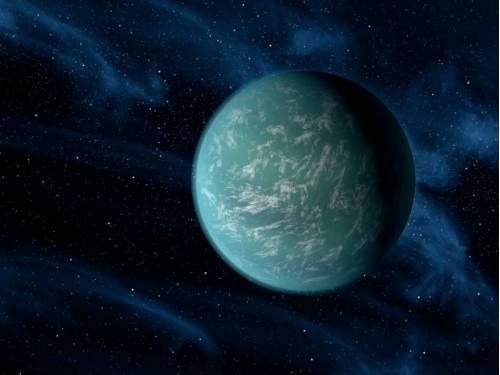NASA’s Kepler space observatory has discovered its first confirmed planet in the so-called “habitable zone” – the region where liquid water could exist on a planet’s surface.
Kepler-22b is thus far the smallest planet found orbiting in the middle of the habitable zone of a star similar to our sun.

The planet is about 2.4 times the radius of Earth; however, scientists don’t yet know if it has a predominantly rocky, gaseous or liquid composition.
Kepler-22b is located 600 light-years away. While the planet is larger than Earth, its orbit of 290 days around a sun-like star resembles that of our world.
The planet’s host star belongs to the same class as our sun, called G-type, yet it is slightly smaller and cooler.
Although previous research hinted at the existence of near-Earth-size planets in habitable zones, clear confirmation has proved elusive. Of the 54 habitable zone planet candidates reported in February 2011, Kepler-22b is the first to be definitively identified.
Nevertheless, there are still 48 planet candidates in their star’s habitable zone that require further investigation.
“The tremendous growth in the number of Earth-size candidates tells us that we’re honing in on the planets Kepler was designed to detect: those that are not only Earth-size, but also are potentially habitable,” said Natalie Batalha, Kepler deputy science team lead at San Jose State University in San Jose, Calif.
“The more data we collect, the keener our eye for finding the smallest planets out at longer orbital periods.”






